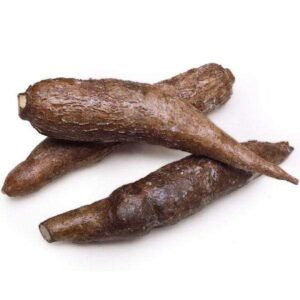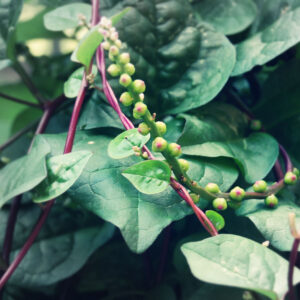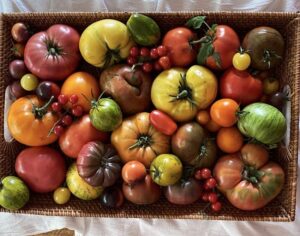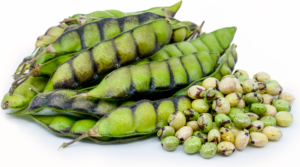What Are The Best Heat Tolerant Vegetables
In my 15 years of gardening in both Florida and Costa Rica, I have come to understand the unique challenges and opportunities of tropical gardening. At first, I was surprised to find that my standard American vegetables were not flourishing in the warm and humid climates of the tropics. But after some experimentation, I learned that the key is not just in the technique, but in the kind of crops you choose to plant.
Tropical gardening, like any other type of gardening, requires healthy soil, water, and nutrients. However, it also demands a deeper understanding of the climate, topography, and native flora. Choosing crops that are resistant to diseases and fungi is especially important in areas with high levels of rainfall and humidity. I have found that many tropical perennials have built-in protective traits that make them less prone to mold and fungus.
That being said, not all crops are suitable for tropical gardening. Some vegetables, like carrots, cabbage, broccoli, beets, and radishes simply in intense heat of a tropical summer like they do in a temperate climate. But fear not! There are plenty of other options to explore. By embracing the unique growing conditions of tropical regions, you open yourself up to a rich variety of tropical perennial vegetables that you might not have considered otherwise.
One of the greatest advantages of tropical gardening is the ability to produce fresh vegetables year-round. Even in the depths of winter, you can be sure to have a thriving garden, brimming with a colorful array of delicious and nutritious fruits and vegetables. So, if you’re ready to take on the challenge and excitement of tropical gardening, get ready to get your hands dirty and explore a whole new world of horticultural wonders!
Here are some of the best crops for hot tropical climates.

Cassava (Manihot esculenta)
Root Crops
In the northern USA or they may be staples in the June veggie patch, but here they’re winter crops. For some summer alternatives, consider sweet potato, boniato, and cassava.
Boniato(also known as Camote) is a relative of sweet potato and very popular in South Florida, the Caribbean and throughout Central America. It can be used as a sweet potato substitute in recipes. The main differences are color and texture. Boniato’s flesh is white and fluffier than sweet potatoes. It’s also excellent dual purpose crop. You get a starchy tuber along with the sweet potato greens that can be eaten like spinach and constantly regrow. They’re great raw in salads or tossed into soups and stews.
Cassava, also called yuca or manioc, produces edible starchy, tuberous roots. They’re prepared after boiling and then baked, mashed, or fried, like potatoes. Yuca is the third most important source of calories in the tropics, after rice and maize. It’s a pest free, calorie rich starchy staple crop that thrives in hot climates with minimal watering. Yuca root has more than double the carbohydrates per gram compared to potatoes.
Red Malabar Spinach (Basela Rubra)

Leafy Greens
When temperatures climb, moringa, amaranth and tropical spinaches are at their best. These greens are good substitutes for cool-weather collards and spinach.
Moringa is a highly valued plant, distributed in many countries of the tropics and subtropics. It has an impressive range of medicinal uses with high nutritional value. It’s called a supermarket on a tree and yields at least three different edibles: pods, leaves, and seeds. The roots are used in various medicinal and ayurvedic traditions. The different parts of this plant contain a profile of important minerals, and are a good source of protein, vitamins, β-carotene, phytochemicals and the full chain of essential amino acids. It’s also drought resistant and thrive in poor soil.
Amaranth greens, also called callaloo (A. gangeticus) are commonly eaten as boiled greens. The striking tricolor variety deserves a place alongside your ornamentals, too. Amaranth is also hated by farmers across the midwest and named “pigweed”.
Tropical spinaches are cold sensitive but in South Florida they may be grown as perennials. Species include Malabar spinach (Basella alba and B. rubra), Sissoo Spinach, Okinawa spinach (Gynura crepioides), longevity spinach (Gynura Procumbens), and more. While these are not true spinaches (that would be Spinacia oleracea) they can keep you harvesting leafy greens all summer long.

Squashes
Despite its name, “summer squash” doesn’t thrive in Florida during the summer. But long after it’s too hot to plant zucchini, tropical squashes thrive.
Calabaza, Seminole pumpkin, long squash, chayote, and luffa could be the stars of your summer garden instead. Most people only think of luff as a sponge. If you eat them young, they’re like a tasty zucchini and if you let them grow to full size, you can dry them, peel them and have bath sponges.

Various heirloom tomatoes
Tomatoes
This popular vegetable is another crop that doesn’t perform well in our steamy summer months. Wilts, pests, and the relentless summer heat all contribute to gardeners’ struggles growing tomatoes. Instead of traditional varieties, try tomatillo, cherry tomatoes, or Everglades tomato. For a more traditional tomato crop, ‘Heat Wave II’ and other heat-tolerant varieties are good options.
Pigeon Peas (Cajanus cajan)

Beans and Peas
Beans and peas are among the easiest plants to grow and saving seeds is a breeze. Pigeon peas, winged beans, long beans, and tropical pole beans are good choices for summer gardens. Heat-tolerant varieties of pole and bush beans are also available.
Pigeon pea is fast growing, hardy, widely adaptable, and drought resistant. Pigeon pea is the 4th most consumed bean in the world. It’s a perennial woody shrub that can grow up to 3.5 meters and will produce “peas” for up to 5 years. The pigeon pea serves as good nutrition for humans as well as excellent feed for cattle, pigs and chickens.
As legumes, these beans and peas also fix nitrogen in the soil. They make good summer cover crops, enriching the soil for your cool-weather plantings. Climbing beans like those above are also a component of the classic indigenous American planting technique, “The Three Sisters”. Maize(corn), beans, and squash are planted close together. The maize is planted in a dirt mound. After it’s about 6-12 inches tall, the beans are planted on the edge of the mounds. Then, the squash are plants in-between the mounds to cover the ground, hold in moisture, and prevent weeds. For a more detailed explanation check out the University of Florida’s instructional page here.
Where can I find seeds and starts?
In Florida, seeds and live plants are sold all over. But keep in mind, just because it’s sold in your local walmart, doesn’t mean it’ll do well in your back yard with full sun exposure. In Central America, I suggest checking out the local “veterinaria” or “tienda agricola”. You can also find cuttings, starts and seeds for sale on Amazon.



GIPHY App Key not set. Please check settings
One Comment